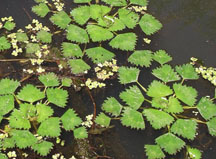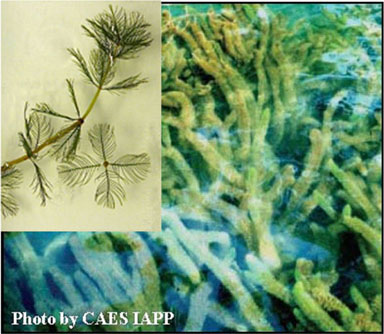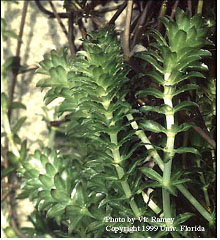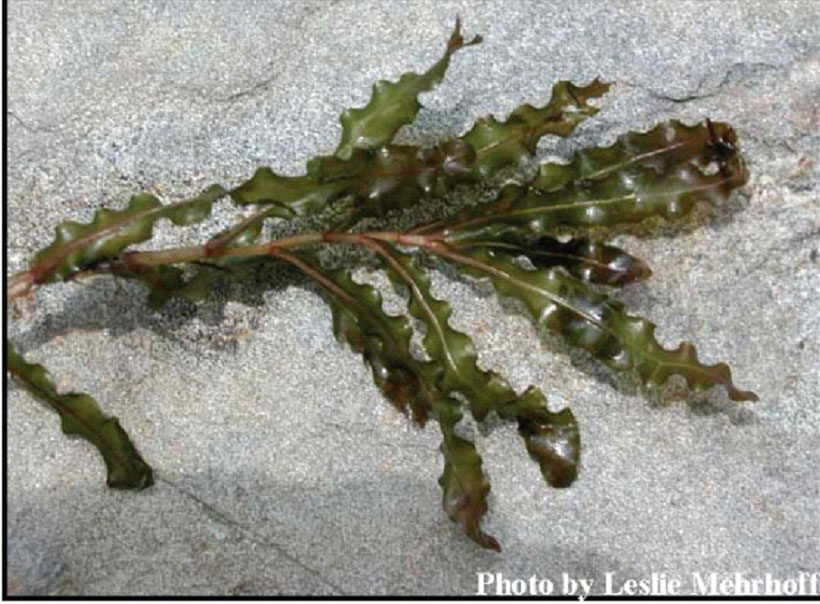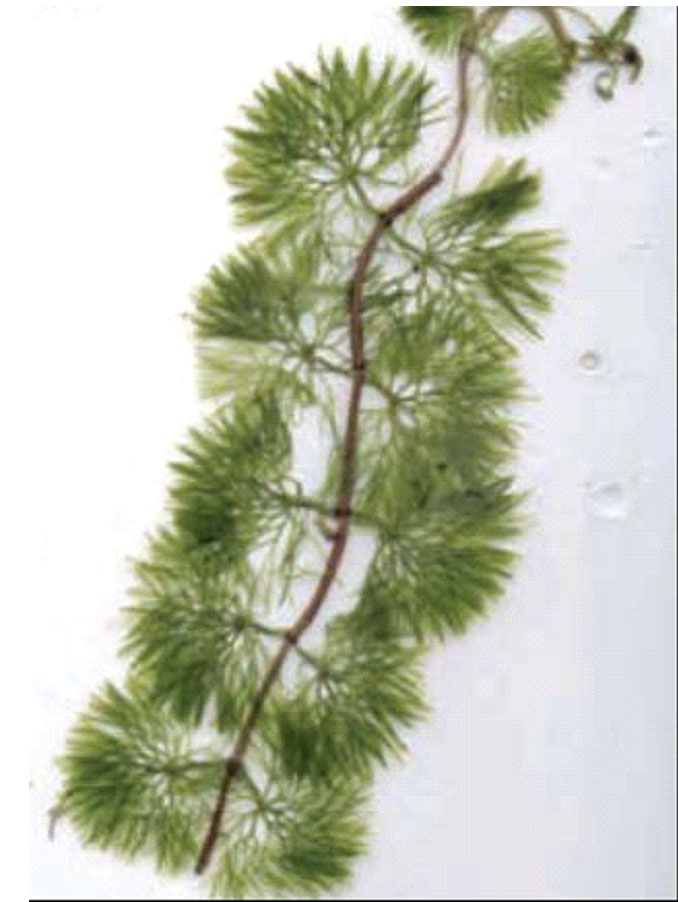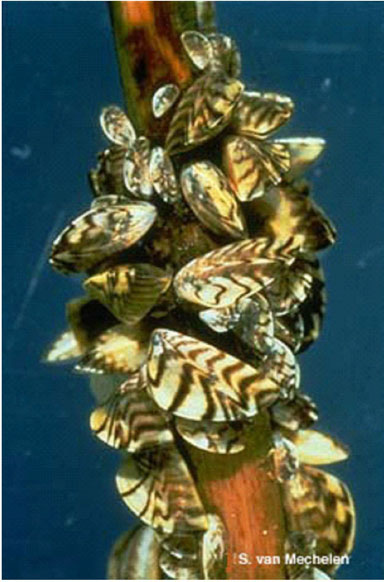Examples of Aquatic Invasive Species in Connecticut
It is critical that boaters take responsibility for stopping the spread of these plants and animals. IT IS ILLEGAL TO TRANSPORT on a boat or trailer any vegetation and the following aquatic invasive species (as determined by the Commissioner pursuant to PA 12-167):
- Zebra mussel (Dreissena polymorpha)
- Quaqqa mussel (Dreissena bugensis)
- Chinese mitten crab (Eriocheir sinensis)
- New Zealand mud snail (Potamopyrgus antipodarum)
- Asian clam (Corbicula fluminea)
- Rusty crayfish (Orconectes rusticus)
Invasive or non-native plants and animals crowd out native plants and animals. They can also interfere with recreation by clogging up a boat motor, tangling around a swimmers foot, crowding out your favorite largemouth bass, trout, perch, etc. Once established, invasive plants and animals are very expensive and virtually impossible to eradicate.
Explore the CT AIS web app to discover where aquatic invasive species (AIS) have been documented across Connecticut. Learn how to identify these species that threaten the state’s freshwater ecosystems and report any new AIS sightings directly to the Office of Aquatic Invasive Species on the “Report AIS and Update Database” page. Report mitten crabs and other marine aquatic invasive species on DEEP's online reporting app, the Marine Aquatic Invasive Species Survey (MAIS Survey) and check out the MAIS Public Map Viewer (online companion mapping tool that can be used to report, display, and download sightings.)
To learn more about some of the freshwater invasive plants and animals, select one of the photos below:
Hydrilla

Hydrilla is a submersed aquatic plant that typically grows rooted in the sediment but can grow as a free-floating plant when fragmented. Hydrilla forms dense mats of vegetation that quickly outcompete native species for habitat. It also makes navigating waterways difficult for boats. It grows fast and is adaptable to many environments.
Hydrilla Identification:
- Leaves are whorled around the stem in groups of 5 (leaves are whorled in groups of 4 to 10 for Connecticut River hydrilla). Leaves are lance-shaped, with serrated margins.
- Stems grow up from the sediment to the surface of the water. At the water’s surface, stems are highly branched, forming dense mats of vegetation. Stems produce reproductive structures called turions (pictured below: vegetative buds that can grow into new plants).

Photo credit: Office of Aquatic Invasive Species, Connecticut Agricultural Experiment Station
Hydrilla Distribution
Hydrilla was first identified in Mystic, Connecticut, in 1989 and has spread to a number of other Connecticut waterbodies. Prior to being discovered in Coventry Lake during 2015, hydrilla was primarily limited to a number of small privately-owned waters with limited access.
A distinct subspecies of hydrilla was found in the Connecticut River in 2016 near Glastonbury. Unlike the other strains, the Connecticut River strain is more robust, has more leaves per whorl, and produces more turions, but does not produce tubers. Beginning in 2023, Connecticut River strain of hydrilla was discovered in a number of public waters, including Amos Lake, Bashan Lake, Congamond Lake, East Twin Lake, Gardner Lake, Middle Bolton Lake, Pachaug Pond, Pameacha Pond, and Pocotopaug Lake. Additionally, non-Connecticut River strain hydrilla was also first documented in Lake Lillinonah during 2023.
CT DEEP is working on an interactive map to show the current distribution of hydrilla in public waters. Once ready for publication, a link to the map will be posted here.

If hydrilla has been found at a lake or pond, you will see this sign near the boat launch.
Zebra Mussels
Zebra mussels have been found in Lake Zoar, Lake Lillinonah and Lake Housatonic. This is the first report of a new infestation of this highly invasive bivalve in Connecticut since 1998 when zebra mussels were first discovered in East and West Twin Lakes in Salisbury. During 2009, zebra mussels were discovered in Massachusetts in Laurel Lake and in the mainstream Housatonic River. At this point, it is uncertain if the mussels found in Lakes Lillinonah, Zoar and Housatonic are the result of downstream migration from these upstream sources of the result of a separate introduction, however, downstream migration is suspected.
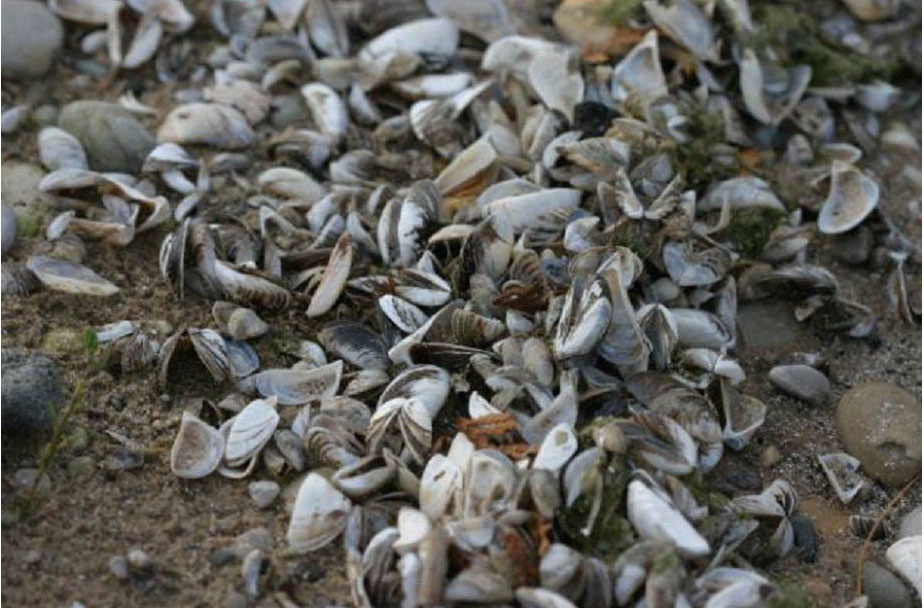
Boaters and anglers using any of these waters and western Connecticut in general should use extra care to avoid transporting water, aquatic vegetation, and possibly zebra mussels to new locations.
The zebra mussel is a black and white striped, bivalve mollusc which was introduced into North American waters through the discharge of ship ballast water. Since its discovery in Lake St. Clair (Michigan/Ontario) in 1988, the zebra mussel has spread.
Chinese Mitten Crab
A Chinese mitten crab was found in Connecticut waters and confirmed by DEEP and Connecticut Sea Grant in June of 2012. The crab was collected from the Mianus Pond fishway on the Mianus River (Greenwich) and is the first confirmed sighting of this invasive crab in this state. Where abundant, Chinese mitten crabs can damage fishing gear, clog pumps and intake pipes, cause riverbank erosion through their burrowing activities, and outcompete native species for food and habitat. These crabs are relatively new to the Atlantic coast; however, and at this time it is unclear as to what their effects will actually be here.
DEEP needs your help! Be on the lookout for Chinese mitten crabs.
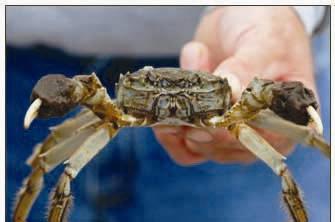
Mitten crabs are NOT native to Connecticut but have been found in our state. Establishment of mitten crabs in Connecticut may have negative consequences for coastal and freshwater ecosystems. Any crab found in freshwater should be investigated, as there are no freshwater crabs in New England.
Adult Chinese mitten crabs have several distinctive characteristics that aid in identification:
- Brownish-orange to greenish-brown color.
- Hairy, white-tipped claws (look like mittens).
- Distinct notch between the eyes.
- Four spines along each side of the shell.
- Legs are twice as long as the width of the shell.
- Only crab that would be found in freshwater in the Northeast.
Please help us learn more about mitten crabs in Connecticut.
If you catch a mitten crab:
- Do not release it!
- Please freeze it or preserve it in alcohol.
- Note date and location of capture
- Please report your finding within 48 hours to david.molnar@ct.gov or call 860-434-6043.
- Report mitten crabs on DEEP's online reporting app, the Marine Aquatic Invasive Species Survey (MAIS Survey).
- MAIS Public Map Viewer (Online companion mapping tool that can be used to report, display, and download sightings.)
- DEEP's GIS Open Data Website. (Instructions on how to use)
Chinese Mitten Crab Sign (request for assistance)
Rusty Crayfish

Rusty crayfish is a large crayfish that can be identified by reddish spots on each side of the body just in front of the tail, grayish green color, smooth mandibles (mouth parts without serrated edge) and black bands on tips of claws. Rusty crayfish feed heavily on invertebrates that are important food sources to stream fishes and can destroy aquatic vegetation beds and habits that can impact game fish populations. Rusty crayfish is spread via bait buckets.
Milfoils
Milfoils forms very dense mats of vegetation on the surface of the water, which can make water activities dangerous.
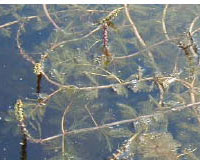
Eurasian water milfoil was first found in Connecticut in 1979 and can now be found in over 40 lakes and ponds in Connecticut as well as the Connecticut River. Eurasian water milfoil is a rooted, annual plant with a tan or reddish stem, submerged leaves are usually in whorls of four around the stem. It spreads through primarily through fragmentation. When Eurasian water milfoil reaches the surface, it can form a dense mat, which interferes with boating, swimming and other recreational activities, and can alter the ecosystem of the lake. These plants also produce a reddish flower that emerges from the water.
Variable leaf milfoil was first discovered in Connecticut in 1936 and can now be found in approximately 30 lakes and ponds in Connecticut. Variable leaf milfoil is a rooted, annual plant with a thick red stem and has submerged leaves that are typically opposite. It spreads through fragmentation. Like Eurasian water milfoil, variable leaf milfoil can form a dense mat, which interferes with boating, swimming and other recreational activities, and can alter the ecosystem of the lake. These plants also produce flowering spikes that can emerge from the water.
Curly Leaf Pond Weed

Curly leaf pond weed is one of the most common invasive plants in Connecticut. It was first discovered in 1932 and can now found in 40 Lakes and pond in Connecticut as well as the Connecticut and Housatonic Rivers. Curly Leaf Pond Weed has a flattened stem with alternate leaves. The leaves are stalkless and have wavy edges (where it gets its name from). These plants spread via turions (soft, hardened leave). Like the invasive milfoil, curly pond weed can produce large, dense mats that interfere with water activities and can alter the ecosystem of the waterbody. These plants differ from most of the invasive plants in Connecticut, in that they often die back by mid-summer. The turions are dormant until the autumn when the water is cool.
Fanwort
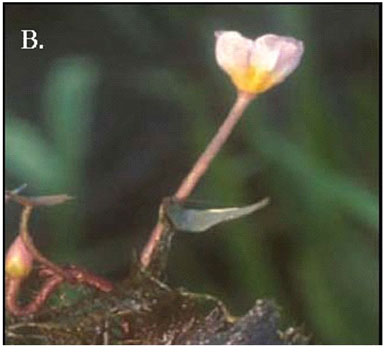
Fanwort was first discovered in 1937 and can now be found in more than 30 lakes in Connecticut and in wetlands along the Connecticut River. Fanwort has submerged leaves that are opposite and have petioles, or short stems. They also have a few small oval, floating leaves at the top of the plant just before the white or pickish flower that can emerge from the water. Fanwort spreads primarily through fragmentation.
Water Chestnut
Water chestnut was first discovered in Connecticut in 1999 and can be found in the following locations: scattered sites along the Connecticut River from Hartford to Lyme, both in the main stem river and in a number of coves (including White Oaks Cove, Keeney Cove, Hamburg Cove) and connected ponds. Water chestnut has also been found in a number of other waters scattered throughout CT including the Mattabesset, Hockanum and Podunk Rivers, small ponds in Eastford, Thompson and West Hartford, Bantam Lake (eradicated, non found in the last several years), Mudge Pond and at the confluence of the Still River and the Housatonic River.
Anglers fishing in the Connecticut River, its tributaries, and elsewhere should be on the lookout for this highly invasive plant. DEEP and other organizations are involved in eradication efforts.
Water chestnut is a rooted, annual aquatic plant with triangular-shaped floating and feather-like submerged leaves. Its sharp, spiny fruits wash ashore and can inflict painful wounds if stepped on. Dense water chestnut growth can make fishing, boating, swimming and other recreational activities nearly impossible.
If you find this plant, contact Harry Yamalis at 860-424-3034 or harry.yamalis@ct.gov .
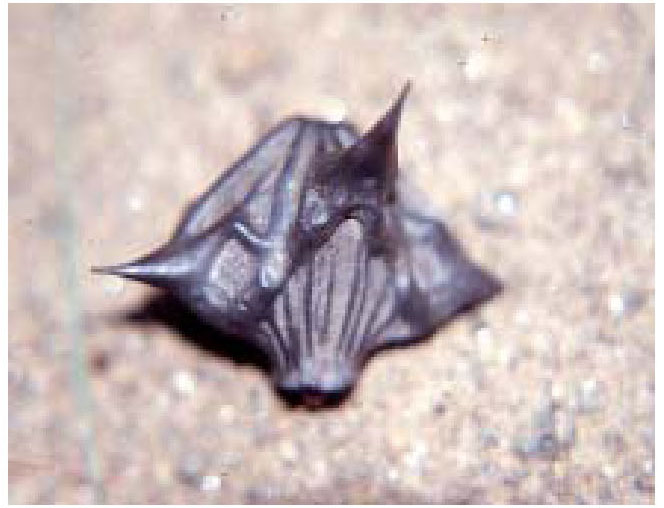
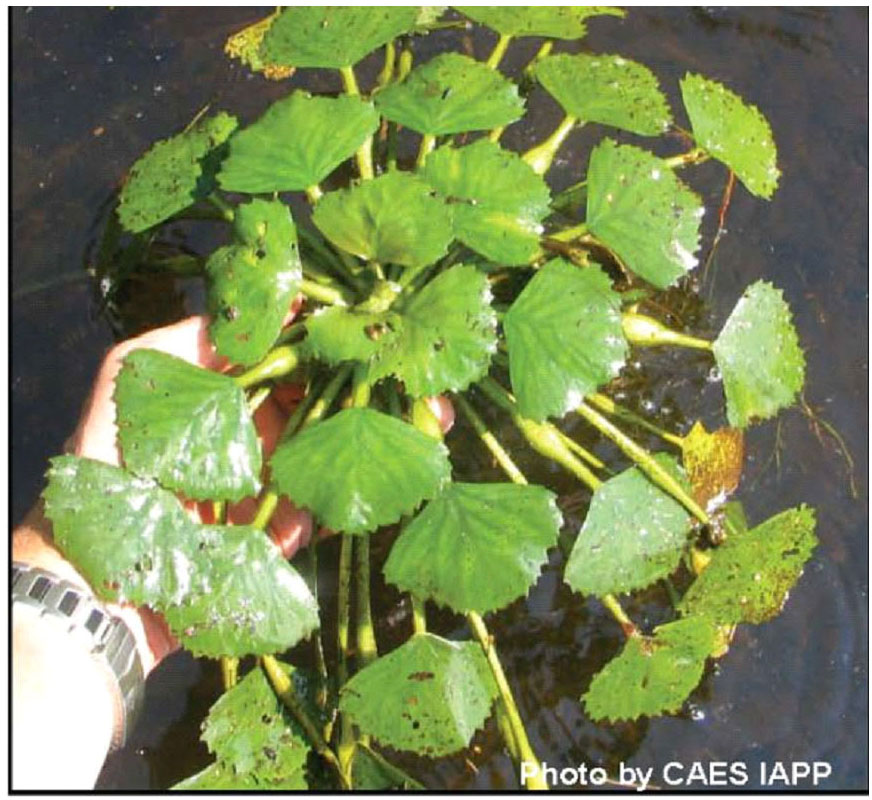
Rock Snot
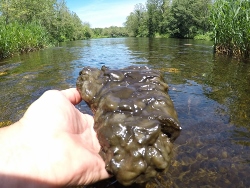
Rock snot (Didymosphenia geminata, Didymosphenia hullii, Cymbella janischii) is a collective term for a group of microscopic diatoms (a type of algae) which during “blooms” (a time when the algae goes through explosive and rapid growth) and can form large mats of thick cotton-like material that covers large portions of the stream bottom.
Dr. Diba Khan-Bureau is a UCONN research scientist who has studied, since 2012, the 3 different species of rock snot (diatoms that form copious amounts of mucilaginous stalks) now found in the West Branch Farmington River and is currently monitoring the growth of rock snot (e.g. didymo). She is asking for your assistance by providing her information of the location(s) of the growth and your opinion on the changes you have seen in the river ecosystem. If you would like to help, please contact Diba at Dkhan-bureau@trcc.comment.edu.
History in Connecticut - In March of 2011, an angler collected a small sample of what was believed to be “didymo”. After its discovery, routine monitoring began in order to document any spread or additional blooms (Khan-Bureau et. al. 2014). Through this extensive work, it was determined that the didymo found in Connecticut was actually a new species (Khan-Bureau et. al. 2016). This species has been named Didymosphenia hullii, after the late Dr. David Hull, former director of transplant surgery at Hartford Hospital.
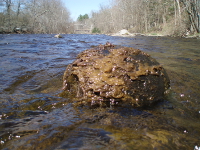
While working to broaden our knowledge about didymo, a second type of “rock snot” called Cymbella janischii was discovered about one mile downstream of the Route 318 bridge in Barkhamsted (near church pool) (Khan-Bureau et. al. 2016). This diatom is native to the Pacific Northwest and has only been found east of the Rocky Mountains in a few locations (closest being New York). It is likely that this alga was inadvertently transported to the West Branch Farmington by humans.
As of June 2017, Didymosphenia hullii and D. geminata have been observed within the West Branch Farmington River, along with an extensive bloom of Cymbella janischii (Khan-Bureau personal communication). Until now didymo had been only confirmed above the confluence with the Still River, Barkhamsted. In June of 2017, both have been confirmed as far downstream as the Barkhamsted/New Hartford town line. The Cymbella bloom is prolific and widespread throughout the West Branch Farmington River Trout Management Area.
Additional information can be found in our Rock Snot Brochure and a video on our CT Fish and Wildlife Facebook page.
Please follow the advice below to help prevent the spread of didymo or any other potential aquatic species to new waters.
What you can do to prevent the spread of didymo and many other aquatic organisms:
Before leaving the water:
-
CLEAN: your waders, boat, kayak, canoe, tube (especially the soles) including rinsing any sand or mud and removing leaves, plant material, or algae.
-
DRAIN: all water from your boat, kayak, or canoe before transporting.
At home or prior to your next location:
-
DRY: anything that comes into contact with water (boats, trailers, anchors, propellers, fishing equipment, clothing, dogs, etc.) for a minimum of one week during hot/dry weather and four weeks during cool/wet weather.
If drying is not possible:
-
Wash with hot water (preferably high pressure).
-
Dip equipment into 100% vinegar for 20 minutes prior to rinsing.
-
Use a 1% salt solution (1oz. per gallon) or soap and hot water (Lysol, boat soap, etc.) for 10 minutes prior to rinsing.
-
Freeze for at least 24 hours
More information on didymo (rock snot):
Content last updated in October 2024.


